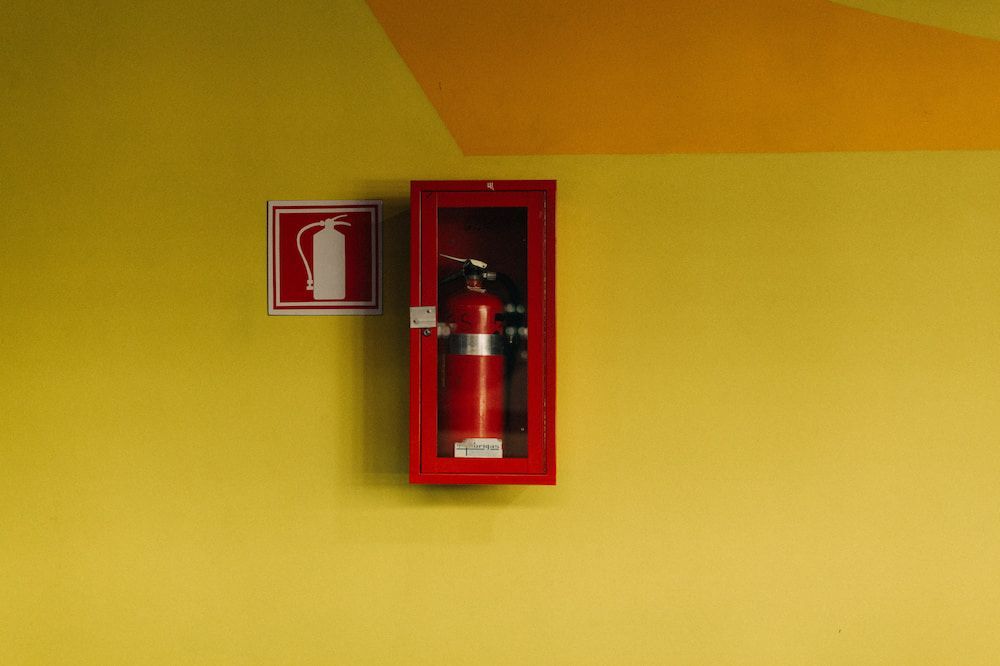This is a subtitle for your new post

Understanding The Various Fire Extinguisher Clean Agents
When it comes to fire safety, having the right knowledge about different clean agents is essential for effective fire suppression as you look for the correct option to install in your own building.
In this article, we will explore a range of clean agents commonly used in
fire extinguishing systems. We'll discuss what a clean agent is, their unique properties, advantages/ limitations, and applications, enabling you to gain a comprehensive understanding of their use.
This way, you, as a business or homeowner, can make informed decisions when selecting the appropriate, cost-effective solution for various fire hazards. Carry on reading as we unravel the intricacies of fire extinguisher clean agents and enhance your fire safety knowledge!
What is a Clean Agent?
A clean agent, also known as a gaseous fire suppression agent, is a type of fire suppressant that is designed to extinguish fires by displacing oxygen or removing heat and leaving no residue behind, causing no damage to the protected area. These agents are typically stored as a gas or a liquid that converts into natural gases upon discharge.
As touched on briefly above, a clean-agent fire extinguishing agent works by interfering with the chemical reactions involved in an oncoming fire, primarily by reducing the concentration of oxygen or interrupting the chemical chain reaction. When broken down, this deprives the fire of the necessary components to sustain its energy, effectively extinguishing it.
It is important to note that the clean agent, although it leaves behind no mess after the event of a fire, is also known as a ‘clean agent’ due to it having no short, medium, or long-term effects on our environment.
When you install these clean-agent fire suppression systems in your building, you will be safe knowing that they have no ozone depletion potential (ODP) and little to no global warming potential (GWP).
The Most Common Fire Extinguisher Clean Agents
As you discover and research the various clean agents available on the market, you will quickly realise that there are only three that stand out above the rest for performance, price, and quality. Let’s take a look at each of them individually so you can learn more about how they perform in their respective applications:
Inergen Gas Composition
The Ansul Inergen gas composition is built up of three different inert gases: nitrogen, argon, and carbon dioxide (CO2). With all of these gases forged together, the clean agent compound works effectively to remove the oxygen from the fire and prevent any further flames from spreading.
Not only will this inert gas efficiently minimise and remove the fire from spreading around your building, but Inergen also keeps the oxygen level between 12% and 21%, depending on the Inergen clean agent fire suppression system you invest in.
Novec 1230
Novec 1230 (3M Novec 1230) is an environmentally-friendly fire suppression fluid that is incorporated in many gaseous fire suppression systems with the set responsibility of minimising damage to equipment and humans by mitigating the flames of the oncoming fire.
However, this electrically non-conductive, non-toxic, colourless, and odourless compound hones in on removing the heat element of the fire with its cooling effect. These systems are often implemented in applications where water systems would only add more damage to the property, as Novec 1230 requires no cleanup in the aftermath.
FM-200
Similarly to Novec 1230, this clean-agent fire suppression liquid absorbs the heat of the fire when released into the atmosphere, leaving no residue behind and causing no lasting damage to your sensitive equipment.
FM-200 is discharged almost instantaneously into the chaotic environment and will begin fighting against the combustion process in seconds. This is also released as a gas rather than a liquid (like Novec 1230), but will have no impact on the effectiveness of the job at hand.
The Advantages and Limitations of Clean Agents
Every fire suppression system you look at will have positive and negative points that can be improved by another system. However, clean agents are one of the most effective ways to protect you, your staff, and sensitive equipment during a fire.
Thus, discovering the pros and cons of these compounds so you know whether they will suit your needs is paramount. Let’s take a closer look at the advantages and disadvantages of clean agents:
Advantages
- Quick response: With them being automatic fire suppression systems, as soon as a fire is detected, the clean agent will be discharged and suppress the flames within a matter of moments, whether that be by reducing the oxygen level or removing heat from the flame.
- Environmental benefits: Clean agents are ‘clean’ for a reason, as they pose little to no threat to climate change (minimal or no global warming potential or ozone depletion potential).
- Non-conductive: If you use these fire protection fluids, you won’t have to worry about a potential electric shock when suppressing flames around electrical equipment.
- No Cleanup: With clean agents being effective in their suppression methods, they also leave no residue behind, meaning you can return to normal business operations soon after the fire outbreak.
Limitations
- Not all are safe for human consumption: After being in the midst of the fire suppression area, if you stay there too long with certain clean agents, they may begin to cause harm to people if you’re exposed to high amounts.
- Cost: With certain brands, these clean agents, due to how effective they are, can be pricey for a company to install in their place of business.
- Regulatory issues: In some cases, clean agents will not be allowed in certain areas based on the specific regulations that may be set.
What Applications Are Clean Agents Suitable For?
Regarding what applications clean agent fire suppression systems are suitable for, there is a wide range of applications in which they are commonly used, including data centres, server rooms, control rooms, telecommunications facilities, museums, archives, and medical facilities.
Clean agents are ideal for spaces with valuable sensitive equipment and electronics, such as computer servers, data storage, communication equipment, and medical devices, as they provide rapid and effective fire suppression without causing water damage or leaving any long-term damaging residue behind.
Additionally, there are a certain few clean agents that are employed in industrial settings, power plants, and facilities similar to the ones stated above where traditional
water-based systems simply are not feasible or may cause further harm.


